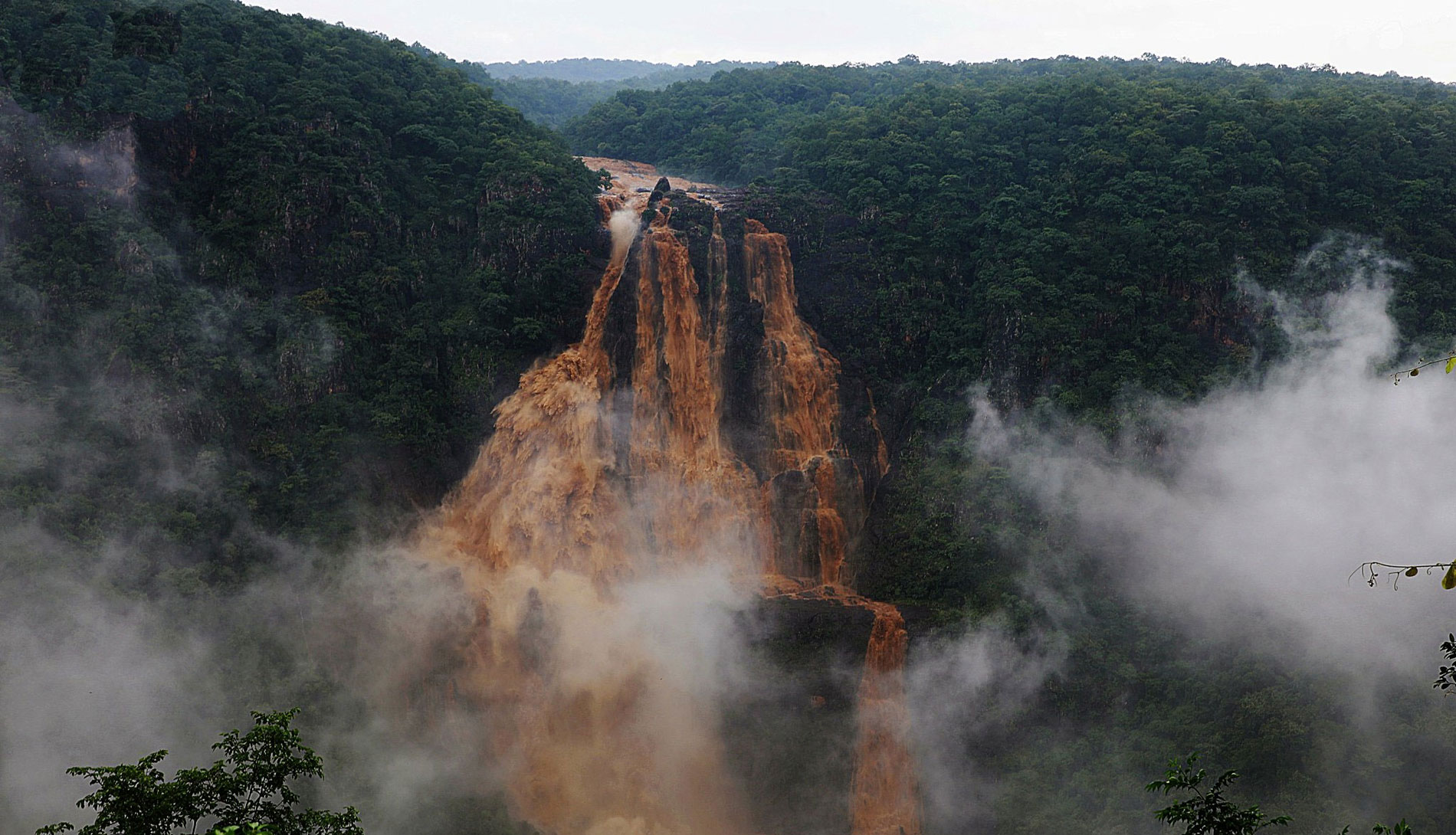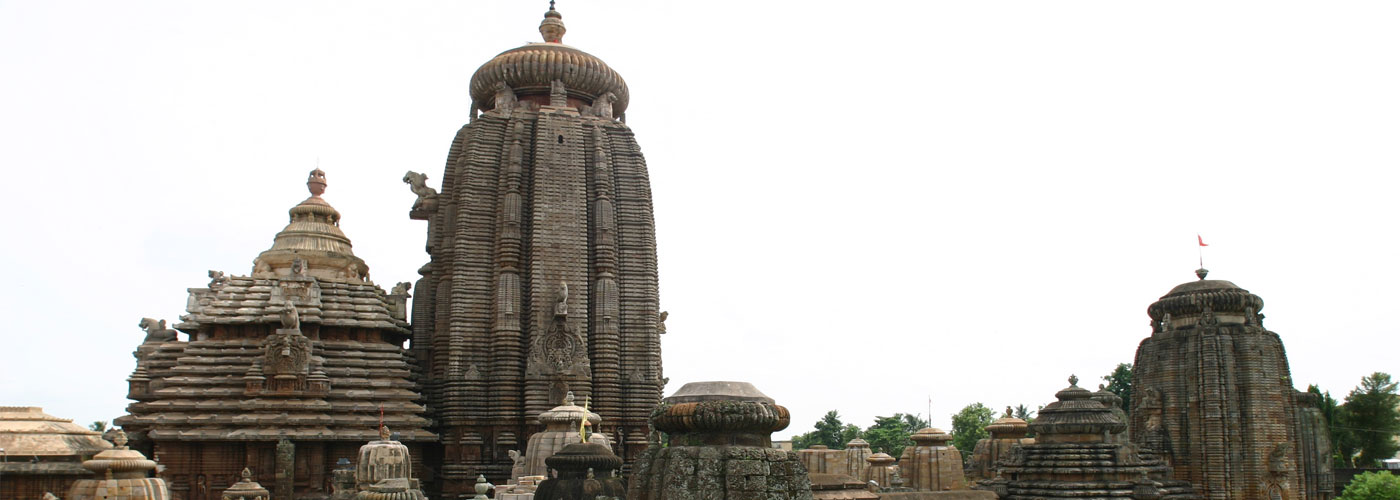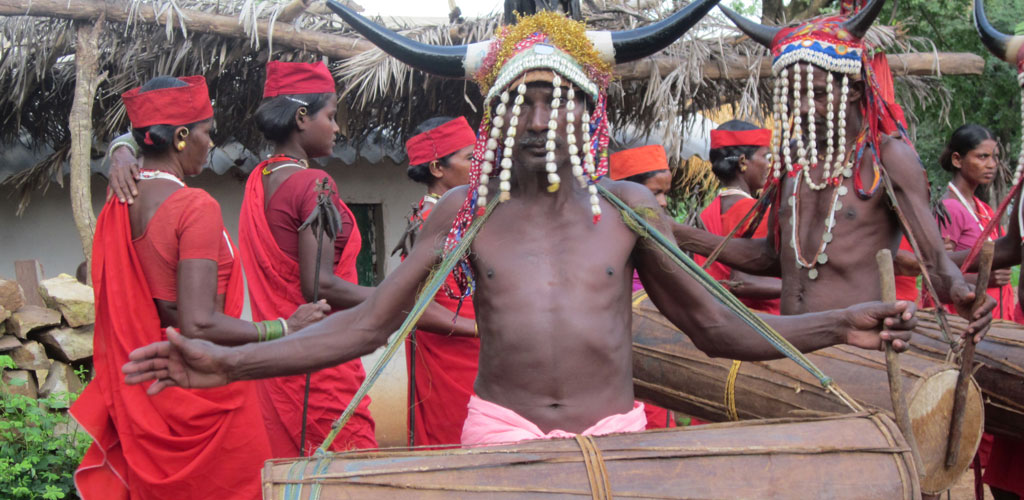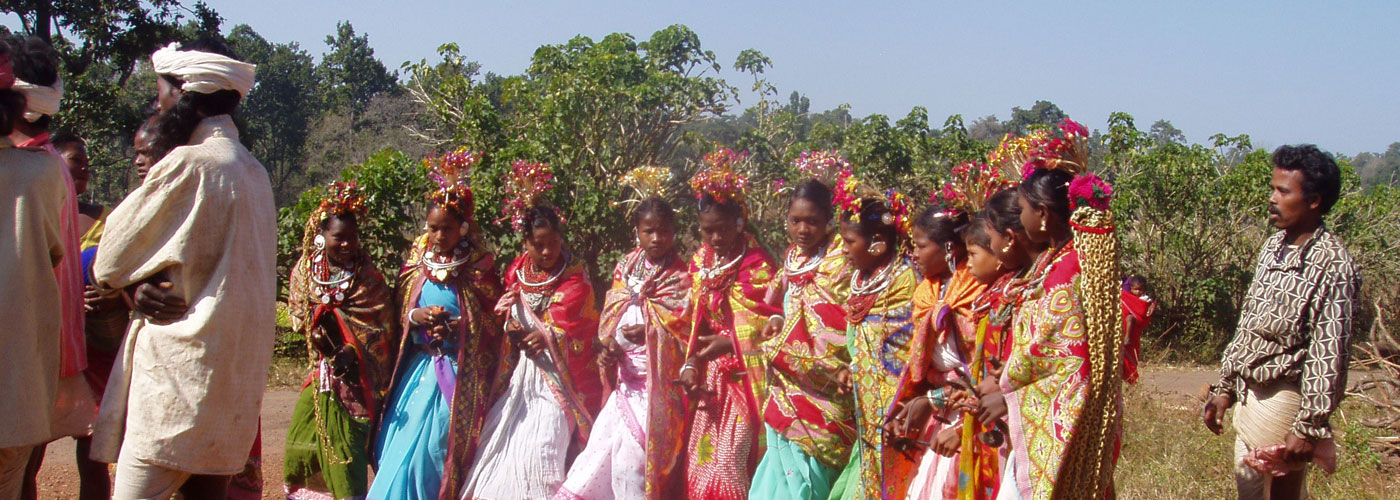BUDDHIST & SPIRITUAL TOUR
The city of Khajurao is the legacy of the Chandella Dynasty. King Yasovarman began the era of temple construction around 930-1050 AD. Eighty five temple were built out of which twenty two still exist today with the rest been destroyed by natural causes. The murals and statues depict scenes from hunting, feasting and dancing to the sensual and the erotic.
The temples were lost to modern civilization until 1838 when Capt. T. S. Burt, a British engineer, re-discovered them.
The temples have been laid out in three different regions: East, West, and South. The most exquisite and most numerous (14 in all) are in the Western group. The Eastern group has six temples three of which are comparatively new Jain temples, and the Southern group consists of two temples.
The patient hands of the craftsmen have transformed even the mundane to excellence, depicting a maiden stretching her limbs in the morning, another wringing water out of her hair after a bath, and a surasundari taking out a thorn out of the sole of her foot. Such detail in these sculptures, like the depiction of strained muscles and cuts on the calf muscles or the biceps is unparalleled anywhere else in the world. Besides erotic sculptures there are court scenes and scenes of battle and advice to the citizens of the kingdom. See the Chausat Yogini [64 sorceresses] temple said to be haunted after dark.
The depiction of uninhibited sex hints towards a liberated society in yesteryear. There are a variety of theories as to why there is such graphic depiction: to prepare young men who had lived in hermitages in abstinence for worldly duties; to gratify kings as simple graphics; sexual education for the masses as they visited the temples; to attract the masses to the sculptors and then enter the temples; as a test for the individual seeking attainment – should he be attracted to sex then he was not ready. The theories abound. It is certain however, that the temples represent the expression of a highly matured civilization. Such depiction of sex forms only a small fraction of all the carvings at Khajuraho
Varanasi
(Benaras, Kasi)
.jpg)
Varanasi is one of the oldest living cities in the world. Many names have been given to Varanasi, though its recently revived official appellation is mentioned in the Mahabharata and in the Jataka tales of Buddhism. It probably derives from the two rivers that flank the city, the Varana to the north and the Asi to the south. Many still use the anglicized forms of Banaras or Benares, while pilgrims refer to Kash, first used three thousand years ago to describe the kingdom and the city outside which the Buddha preached his first sermon; the “City of Light” is also called Kashika, “the shining one”, referring to the light of Shiva. Another epithet, Avimukta, meaning “Never Forsaken”, refers to the city that Shiva never deserted, or that one should never leave. Further alternatives include Anandavana, the “forest of bliss”, and Rudravasa, the place where Shiva (Rudra) resides. Varanasi’s associations with Shiva extend to the beginning of time: legends relate how, after his marriage to Parvati, Shiva left his Himalayan abode and came to reside in Kashi with all the gods in attendance. Temporarily banished during the rule of the great king Divodasa, Shiva sent Brahma and Vishnu as his emissaries, but ultimately returned to his rightful abode protected by his loyal attendants Kalabhairav and Dandapani. Over 350 gods and goddesses, including a protective ring of Ganesha form a mandala or sacred pattern with Shiva Vishwanatha at its center.
The holy city within Banaras is called Kashi “The Luminous One” or the “City of Light”. Light in Hindu philosophy has great meaning for it exemplifies the wisdom that destroys the darkness of ignorance. Sin and evil are understood to be the acts of ignorance. Sin cannot be washed away by water or prayer but only by wisdom. Immortality is also reached through wisdom and understanding. So the City of Light is the City of Eternal Wisdom as well. To die in the city beside the river of life is to die with a promise of redemption, a promise to be liberated from the endless cycle of life and death and reincarnation, and to gain moksha or eternal absolution. So for centuries thousands of people have come to Banaras to die and thousands have brought the ashes of the dead here to immerse them in the holy waters.
A city which, since it is both an exalted place of pilgrimage and an idealized center of faith, has been likened to Jerusalem and Mecca. According to the historians, the city was founded some ten centuries before the birth of Christ. Mark Twain, the American author and litterateur, who was enthralled by the legend and sanctity of Banaras, once wrote: “Banaras is older than history, older than tradition, older even than legend and looks twice as old as all of them put together.”
.jpg)
Varanasi’s prominence in Hindu mythology is virtually unrivaled. A city where the past and present, eternity and continuity co-exist. The city of Banaras is situated on the west bank of the holiest of all Indian rivers, the Ganga or Ganges. The Ganga is believed to have flown from heaven to wash away the worldly sins of the human race of mortals. Normally, She flows from North to South across the country, but near the city of Varanasi, She flows from the South to the North, it is alleged that the River wanted to pay respects to Lord Shiva, and thus had to change its course.
Life on the banks of the Ganga begins before dawn when thousands of pilgrims – men, women and children – come down to the river to wait for the rising sun when immersion in the sacred river will cleanse them of their sufferings and wash their sins away. The city of Varanasi is on the Western bank of the River Ganga with few buildings on the Eastern bank, allowing for a spectacular view of the rising sun. This is of a particular attraction for the thousands of bathers who bathe in the river at sunrise. The backs of the Ganges exhibit the ultimate expression of giving up ones ego, and thus stepping closer to attainment. It is a spectacular sight to see thousands set aside their inhibitions and take off their clothes, thus taking off the expression of their wealth, taking off the expression of their social status, and indeed, an extremely rare phenomena in Indian society, taking off the difference of the sexes, and be just one with their Almighty.
Along the water’s edge, there are the burning ghats. The most sacred one isManikarnika, associated with Goddess Parvati, Lord Shiva’s wife. The most famous temples to visit is the Golden or Vishwanath Temple dedicated to Shiva the most important of the trinity, Brahma, Vishnu and Maheshwara, the Lords of this universe. The original temple was located across the road, but it was destroyed by Aurangzeb who had built a mosque over it. The present temple was built by AhalyaBai of Indore in 1776. The Mosque of Aurangzeb, has been built using columns from the original temple razed by Aurangzeb. This mosque has minarets towering 71 metres above the Ganges. Around this temple evolved the spiritual identity of Varanasi.
.jpg)
The land around Banaras is also held sacred since Shiva is believed to have lived here. It is believed that in this city of 1.5 million, there are 10,000 temples dedicated to different gods and goddesses.
Banaras has always been associated with philosophy and wisdom. A place of learning for many years, the Banaras Hindu University carries on this tradition. The University campus, to the south of the city, was established in 1916, has a student population of 25,000, most of whom live within the 7 sq. km campus, thus making this University one of the largest in India.
To breed national unity during the freedom struggle for India’s Independence, in the 1930s and 1940s, Mahatma Gandhi built a temple where the deity is a three dimension map of India. The map is made up of about 700 individual cubes of marble, showing the respective mountain ranges and the rivers across the country. The idea was that people of different faiths and religions would come and pray for the country. Today, this building is considered a place of worship, and it is given the same respect as a temple.
Today the city is renowned for its silk weavers, who prepare the finest types of woven silk fabrics. A Banaras silk sari or shawl is traditionally a single colored textile with motifs and patterns woven in gold or silver threads. The technique is intricate, the procedure complex and demands great expertise. As the warp and the weft are interwoven on the loom, small, often minute shuttles with gold thread are introduced to form the motif. When the design of the motif is completed, a knot is made and the gold thread cut. The weaving continues until the next design. The smaller the motif or the more intricate the design, the more complex the weaving skills required. Silk weaving in Banaras is a cottage industry and in many areas of the city, especially the Muslim quarters, one can see looms at work all day. Entire families are involved, children often pick up the art from the elders at an early age. There are shops in Banaras, and throughout India, that sell these fine silk fabrics.
Varanasi will perhaps be the most memorable place that you visit in India.
Allahabad
.jpg)
The city of Allahabad is among the largest cities of Uttar Pradesh and is situated at the confluence of three rivers – Ganga, Yamuna and the invisible Saraswati. The meeting point is known as ‘Triveni’ and is especially sacred to Hindus. The earlier settlements of the Aryans were established in this city, then known as Prayag. Its sanctity is manifest by references to it in Purans, the Ramayan and the Mahabharata. According to Hindu mythology, Lord Brahma, the creator God of the Trinity, chose a land on earth (i.e. Prayag) to perform ‘PrakristaYag’, at the beginning of the creation and he also referred to it as ‘Tirth Raj’ or the ‘King of all pilgrimage centres’. As per writing of ‘PadamPuran’ – “As the sun is amongst the moon and the moon amongst the stars, likewise ‘Prayag’ is best amongst all places of pilgrimage”.
Emperor Akbar founded this city in 1575 AD by the name of ‘Illahabas’ which has now become modern Allahabad. The monarch realized its strategic importance as a waterway landmark in North India and also built a magnificent fort on the banks of holi ‘Yamuna’. Allahabad today is an important city where history, culture and religion create a magical confluence, much like the sacred rivers that caress this blessed land. Due to its religious importance, many pilgrims come to Allahabad in the bathing season, the Hindu month of Magh (mid January to mid-february), to purify themselves. During this month, a great gathering and fair called MaghMela takes place on the sands. Every 12th year when the waters are felt to be especially purifying, Allahabad holds a much greater festival called KumbhMela. Many millions of pilgrims attend this festival, coming from all over India. It is believed that bathing during Kumbh cures the bather of all sins and evils and grants the bather salvation.
In 1885, Mark Twain wrote about Allahabad Kumbh -“Pilgrims plodded for months in heat to get here, worn, poor and hungry, but sustained by unwavering faith”.
What To See In Allahabad
.jpg)
Allahabad Fort: Built by Emperor Akbar in 1583 AD, the Allahabad Fort is a fine example of Mughal design and craftsmanship that is unrivalled, to say the least. Situated at the banks of the river Yamuna, the fort is presently used by the army and a limited area is opened for visitors.
Patalpuri Temple: Located inside the Allahabad Fort is the underground temple called Patalpuri. The temple is famous for housing an immortal banyan tree known as Akshaya Vat, which is much revered by the devotees as it is believed to be visited by Lord Rama himself. The tree has been mentioned in several ancient scriptures and writings of historians.
Asoka Pillar: Asoka Pillar, a 10.6 meters (35 feet) high figure, is also located in the front of the entrance to the Allahabad Fort. Made of polished sandstone, the pillar contains several Asokan edicts and a Persian inscription of the great Mughal Emperor, Jehangir.
Hanuman Mandir: Located near Sangam, the confluence of three holy rivers of India – Ganga, Yamuna, and Saraswati, is a famous temple dedicated to Lord Hanuman. The temple houses one big idol of Lord Hanuman in a slightly reclined posture. When the water of Ganga overflows, the temple gets submerged.
SwarajBhawan&AnandBhawan: AnandBhawan is the ancestral home of the Nehru family where many decisions and events related to the freedom struggle have been known to take place. Today it is a museum which houses the memorabilia of the Nehru family. SwarajBhawan, on the other hand, used to be the headquarters of the Congress Committee. Both the Bhawans together served as the Parliament during the British Raj era.
Chandra Shekhar Azad Park: Located near Sangam, the confluence of three holy rivers of India – Ganga, Yamuna, and Saraswati, is a famous temple dedicated to Lord Hanuman. The temple houses one big idol of Lord Hanuman in a slightly reclined posture. When the water of Ganga overflows, the temple gets submerged.
All Saints Cathedral: Clad in white stone with red sandstone dressings, All Saints Cathedral is the finest example of Anglican architecture in Asia. Designed by Sir William Emerson in 1870 and consecrated in 1887, it is one of the oldest churches in India and is popularly known as PattharGirjaghar among the local people. The fantabulous inlay and mosaic work is sure to mesmerize you with its elaborate designs
KhusroBagh: KhusroBagh was completed in 1622 AD and houses the tombs of KhusrauMirza (eldest son of Emperor Jahangir), his mother Shah Begum, and his sister Sultan Nithar Begum. Adorned with birds, flowers, and Persian inscriptions, it is another fine example of Mughal architecture.
Sarnath
There are four geographically important places in the life of Buddha: Where he was born (Lumbini, Nepal), where he gained enlightenment (Bodh Gaya, India), where he gave his first sermon (Sarnath, India) and where he left his mortal body (Kushinager, India).
Buddhist worldwide look upon India as the land of the Buddha and a visit to this country means a pilgrimage to those place sacred to the memory of the Enlightened one.
.jpg)
After the Buddha attained enlightenment in Bodh Gaya he came to Sarnath. Here in the Deer Park, he delivered his first sermon, or in religious language, set in motion the Wheel of Law (Maha-DharmachakraPravartan). The Emperor Ashoka (c 304 – 232 BC), who spread the Buddha’s message of love and compassion throughout his vast empire, visited Sarnath around 234 BC, and erected a stupa here. Several Buddhist structures were raised at Sarnath between the 3rd century BC and the 11th century AD, and today it presents the most expansive ruins amongst places on the Buddhist trail. Sarnath is 10 km from the holy city of Varanasi, and is an exceedingly tranquil place. The ruins, the museum and temple are all within walking distance.
Sarnath is now home to India’s tallest statue of Lord Buddha at 80 feet, built in an area of 2.5 acres and consisting of 815 stones.
.jpg)
We will see a number of Stupas, excavated ruins of monasteries, the deer park where Buddha gave his first sermon and the Ashoka Pillar with the four-sided lions head, which is India’s National Emblem at Sarnath museum. In the Sarnath Museum, we will see a rich collection of Buddhist sculptures comprising numerous Buddha and Bodhisattva images, considered amongst the finest specimens of Buddhist art. Feel free to walk around (clock-wise) the great Stupa, or if you are feeling energetic, do the whole thing – walk around it 108 times.
The MulagandhaKutiVihar is a modern temple erected by the Mahabodhi Society. It has excellent frescoes by KosetsuNosu Japan’s foremost painter and is a rich repository of Buddhist literature. Also see the bodhi tree whose sapling was brought from a tree in Sri Lanka, which in turn originated from the original tree under which Buddha sat in Bodh Gaya and gained enlightenment 2,500 years ago.
Bodhgaya
Bodhgaya is one of the most important and sacred Buddhist pilgrimage center in the world. It was here under a banyan tree, the Bodhi Tree, Gautama attained supreme knowledge to become Buddha,the Enlightened One. Born; in the foothills of the Himalayas as a Sakya prince of Kapilvastu (now in Nepal), most of the major events of his life, like enlightenment and last sermon, happened in Bihar. Buddhism as a religion was really born in Bihar and evolved here through his preaching and the example of his lifestyle of great simplicity, renunciation and empathy for everything living. Significantly, the state’s name of ‘Bihar’ originated from ‘Vihara’ meaning monasteries which abounded in Bihar.
What To See In Bodhgaya
.jpg)
Mahabodhi Temple: The temple stands in the east to the Bodhi Tree. Its architectural effect is superb. Its basement is 48 square feet and it rises in the form of a slender Pyramid till it reaches its neck, which is cylindrical in shape. The total height of the temple is 170 ft. and on the top of the temple are Chatras which symbolize sovereignty of religion. Four towers on its corners rise gracefully giving the holy structure a poise balance. This sacred edifice is like a grand banner unfurled by time to proclaim to the world the pious efforts of the Buddha to solve the knots of human miseries, to ascend above worldly problems and to attain transcendental peace through wisdom, good conduct and disciplined life.
Inside the temple, in the main sanctum, there is a colossal image of the Buddha in sitting posture touching the earth by his right hand. In this posture the Buddha accomplished the supreme enlightenment. The statue is of black stone but it has been guilder by the devotees. The entire courtyard of the temple is studded with large number of votive stupas. These stupas are of all sizes built during the past 2500 years ago. Most of them are extremely elegant in structural beauty. The ancient railings, which surround the temple, are of the first century BC and are among the very interesting monuments of the century.
AnimeshLochanChaitya: It is believed that the Buddha spent one week here looking towards the great Bodhi tree out of gratitude, without twinkling his eyes.
MahabodhiTreeBodhi Tree: The present Bodhi Tree is probably the fifth succession of the original tree under which the Buddha had attained enlightenment. Vajrasana, the seat of stability, is a stone platform on which the Buddha is supposed to have sat in meditation gazing east, under the Bodhi tree.
Chankramana: This marks the sacred spot of the Buddha’s meditative perambulations during the third week after pious enlightenment. It is believed that wherever the Buddha put his feet lotus sprang up.
Ratnagarh: The Buddha spent one week here, where it is believed that five colors came out of his body.
Patna
.jpg)
Patna, also known Pataliputra is the capital of Bihar. Pataliputra was known as Pushpapur and Kusumpur in the earlier times, both of them means the city of flowers. Patali also means the trumpet flower. The city of Patna was founded by the Ajatshatru’s son, Udayana. To Fa-hien, the Chinese traveler, who visited Pataliputra a century earlier, it looked so magnificent that he thought it must have been built by supernatural beings. Patna is situated at the confluence of Son, Punpun and Ganga rivers. It stretches along the southern banks of Ganga for about 15 km. Patna is also a convenient place to visit Nepal through a land route. Patna can be visited throughout the year, except from April to June, which are very hot.
The history of Patna can be traced back 2500 years ago. The ancient city of Patna was situated on a long strip of land, half a mile to the north of the Kumarhar village. King Ajatashtru, the second Magadha king built a small fort at Pataliputra. Later Chandragupta Maurya founded the Mauryan Empire with its capital at Pataliputra. The Greek ambassador Megasthenes was also impressed by the emperor’s administration efficiency and splendour of the city. The Ashok also usurped the throne of his father, Bindusara and started a reign of terror before converting to Buddhists in Patna. Ashok’s palace extended from the mound called ChhotiPahari to Kumarhar and it covered an area of 4 square miles. BhikraPahari, an artificial hill of brick debris, over 40 feet high and about a mile in circuit, on which stood the residence of one of the Nawabs of Patna, is identified as the hermitage-hill built by Ashoka for his brother Mahendra. In the Panchapahari are identified five great relic-stupas built by Ashoka. In the 16th century, the Sher Shah Suri revolted against the Mughal Emperor Humayun, who then ruled the region and established the foundations of new Patna and also built a mosque in 1540 which dominates the skyline.
What To See In Patna
Golghar: Alarmed by the famine of 1770, captain John Garstin built this huge granary for the British army in 1786. The massive structure is 29 m high and the walls are 3.6 m wide at the base. The winding stairway around this monument offers a brilliant panoramic view of the city and the Ganga flowing by.
Martyr’s Memorial: A memorial to seven freedom fighters who sacrificed their lives in the Quit India Movement of August 1942, the Martyr’s Memorial is a modern sculpture facing the Secretariat, where they were shot in their attempt to host the national flag.
.jpg)
HarMandirTakht: Guru Gobind Singh, the tenth Guru of the Sikhs, was born in 1660 in Patna. The HarMandirTakht, one of the four sacred shrines of the Sikhs, stands at this holy site. The original temple was built by Maharaja Ranjit Singh, and contains belongings of the Guru and Sikh holy texts.
Patna Museum: The Patna Museum houses a First World War cannon, metal and stone sculptures of the Mauryan and Gupta periods, Buddhist sculptures and quaint terracotta figures. A 16 m long fossilised tree is one of its special features.
Patharki Masjid: Adjacent to HarMandir Sahib, on the bank of the Ganga, is this beautiful mosque built by Parwez Shah, son of Jehangir, when he was the governor of Bihar. It is also called Saif Khan’s mosque, ChimmiGhat mosque and Sangi Masjid.
.jpg)
Sher Shah Suri Masjid: Sher Shah Suri built this mosque in 1545 to commemorate his reign. Built in the Afghan architectural style, it is one of the many beautiful mosques in Bihar, and one of the impressive landmarks of Patna.
KhudaBaksh Oriental Library: Founded in 1900, a magnificent one man collection of rare Arabic and Persian manuscripts, Rajput and Mughal paintings, oddities like the Koran inscribed in a book only 25mm wide and an assortment of old and new books from the University ofCordoba, Spain. It is one of the national libraries in India. The library also contains the only books to survive the sacking of the Moorish University of Cordoba in Spain.
Jalan Museum: Built on the foundations of Sher Shah’s fort, Qila House contains an impressive private collection of antiques, including a dinner service that once belonged to George III, Marie Antoinette’s Sevres porcelain, Napoleon’s four-poster bed, Chinese jade and Mughal silver filigree,.It is a private collection, and prior permission is required for a visit.
 7978371523
7978371523











